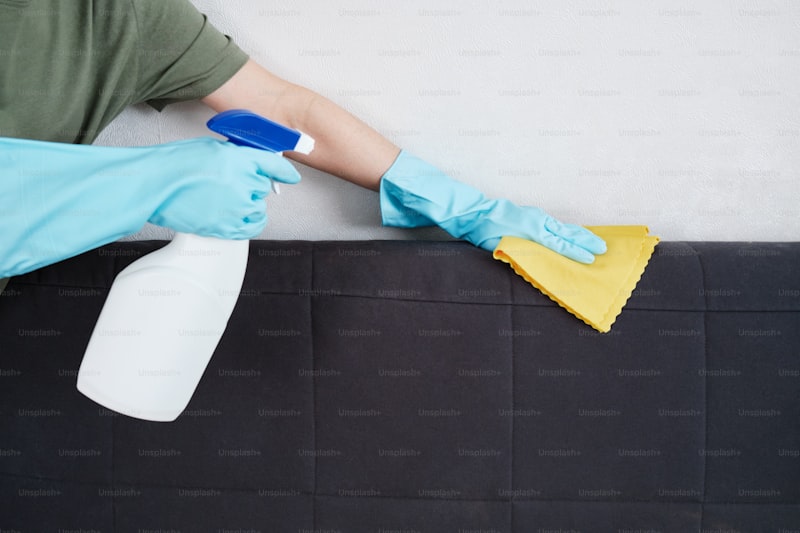Mastering Cleaning Techniques for Delicate Fabrics: A Comprehensive Guide
Cleaning delicate fabrics requires a unique approach to preserve their beauty and longevity. Whether you're dealing with silk, lace, or chiffon, understanding the right cleaning techniques can make all the difference. In this article, we’ll explore effective cleaning strategies, identify common mistakes, and provide tips for maintaining delicate fabrics, ensuring that they remain as stunning as the day you bought them.
Understanding Delicate Fabrics
Delicate fabrics, such as silk, lace, and chiffon, often require special attention due to their sensitive nature. These materials are prone to shrinking, fading, and damage if not treated properly. Understanding the characteristics of these fabrics is the first step toward effective cleaning.
Common Types of Delicate Fabrics
| Fabric Type | Characteristics | Common Uses |
| Silk | Soft, smooth, and luxurious feel; prone to water spots | Elegant dresses, scarves, ties |
| Lace | Fragile and intricate; can fray easily | Cocktail dresses, wedding gowns |
| Chiffon | Lightweight and sheer; can snag and tear | Ballet costumes, evening wear |
| Cashmere | Soft and warm; requires gentle handling | Cardigans, scarves, sweaters |
Essential Cleaning Techniques for Delicate Fabrics
When it comes to cleaning delicate fabrics, the traditional approach of tossing them into a washing machine may not be suitable. Here are some effective cleaning techniques that will help maintain the integrity of your garments.
1. Hand Washing
Hand washing is the safest method for cleaning delicate fabrics. Fill a basin with cool water and add a small amount of mild detergent specifically designed for delicate items. Immerse the fabric and gently agitate the water to allow the detergent to penetrate. Avoid scrubbing, as this can cause friction and damage.
2. Spot Cleaning
If your delicate fabric has a small stain, spot cleaning is the best approach. Use a damp cloth and mild detergent to dab at the stain gently. Blot, don't rub, to avoid spreading the stain or damaging the fabric. Rinse the area with cool water and lay the fabric flat to dry.
3. Dry Cleaning
For certain fabrics such as silk and fine wool, professional dry cleaning may be the best option. Always check the care label before deciding to use this method. Communicate specific instructions to the cleaner, especially for older garments with decorative elements.
4. Steam Cleaning
Steam cleaning is a great way to remove wrinkles without direct contact. Use a handheld steamer at a distance, allowing the steam to relax the fibers rather than direct heat, which could scorch delicate fabrics. This method also helps refresh the fabric, lifting away odors without traditional washing.
Common Mistakes to Avoid
While cleaning delicate fabrics may seem straightforward, several common mistakes could lead to damage. Here are a few pitfalls to avoid:
Using Hot Water
Hot water can cause delicate fabrics to shrink or fade. Always opt for cold or lukewarm water when caring for these items.
Ignoring Care Labels
Always check the care label before cleaning. Different fabrics have different requirements, and ignoring these instructions can result in irreversible damage.
Using Harsh Detergents
Harsh detergents can strip delicate fabrics of their natural fibers and colors. Invest in a mild detergent that is specifically formulated for delicate fabrics to ensure proper care.
Drying Incorrectly
Avoid using a tumble dryer for delicate fabrics. High heat can cause significant damage. Instead, lay garments flat on a clean, dry towel to dry naturally.
Tips for Maintaining Delicate Fabrics
Preventative care is key to extending the life of your delicate fabrics. Here are some maintenance tips to keep in mind:
Store Properly
Always store delicate fabrics in a cool, dry place away from direct sunlight to prevent fading. Use padded hangers for garments that can hang and store knitted items folded to avoid stretching.
Be Mindful of Accessories
Beware of accessories that may snag delicate fabrics, such as bracelets or rough bags. Choose your accessories wisely to minimize the risk of damage.
Regular Maintenance
Regularly check for loose threads, stains, or signs of wear. Taking proactive measures will help you address any issues before they become more serious problems.
Conclusion
Cleaning techniques for delicate fabrics are essential in maintaining their beauty and extending their lifespan. By understanding the nature of different delicate fabrics and applying appropriate cleaning methods, you can ensure your cherished items remain in excellent condition. Regular maintenance and proper care can save you time and money in the long run. Always remember to follow care labels and utilize specialized products to keep your delicate fabrics looking their best.
Final Note
Whether you have a beautiful silk dress or an intricate lace tablecloth, knowing the right cleaning techniques will help you preserve these items for years to come. Always take your time and handle them with care, and when in doubt, seek professional help for dry cleaning. By following these simple guidelines, you can keep your delicate fabrics looking luxurious and fresh.
